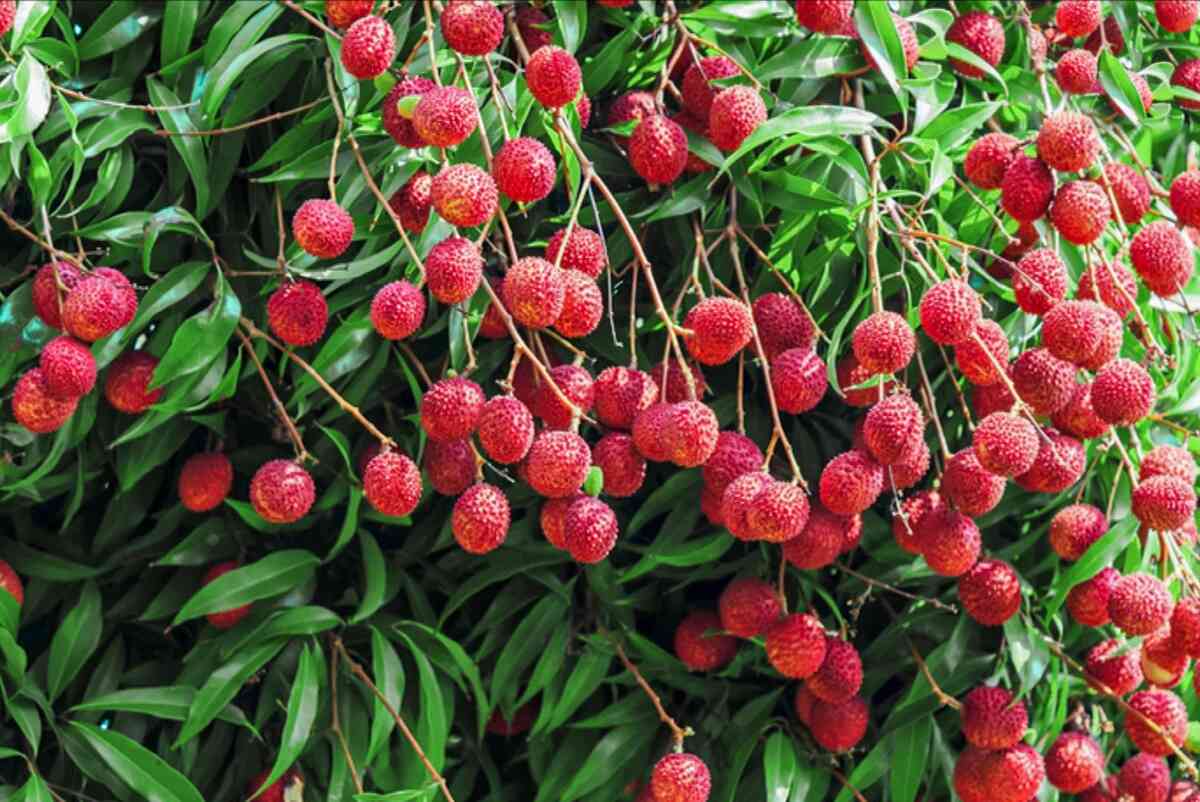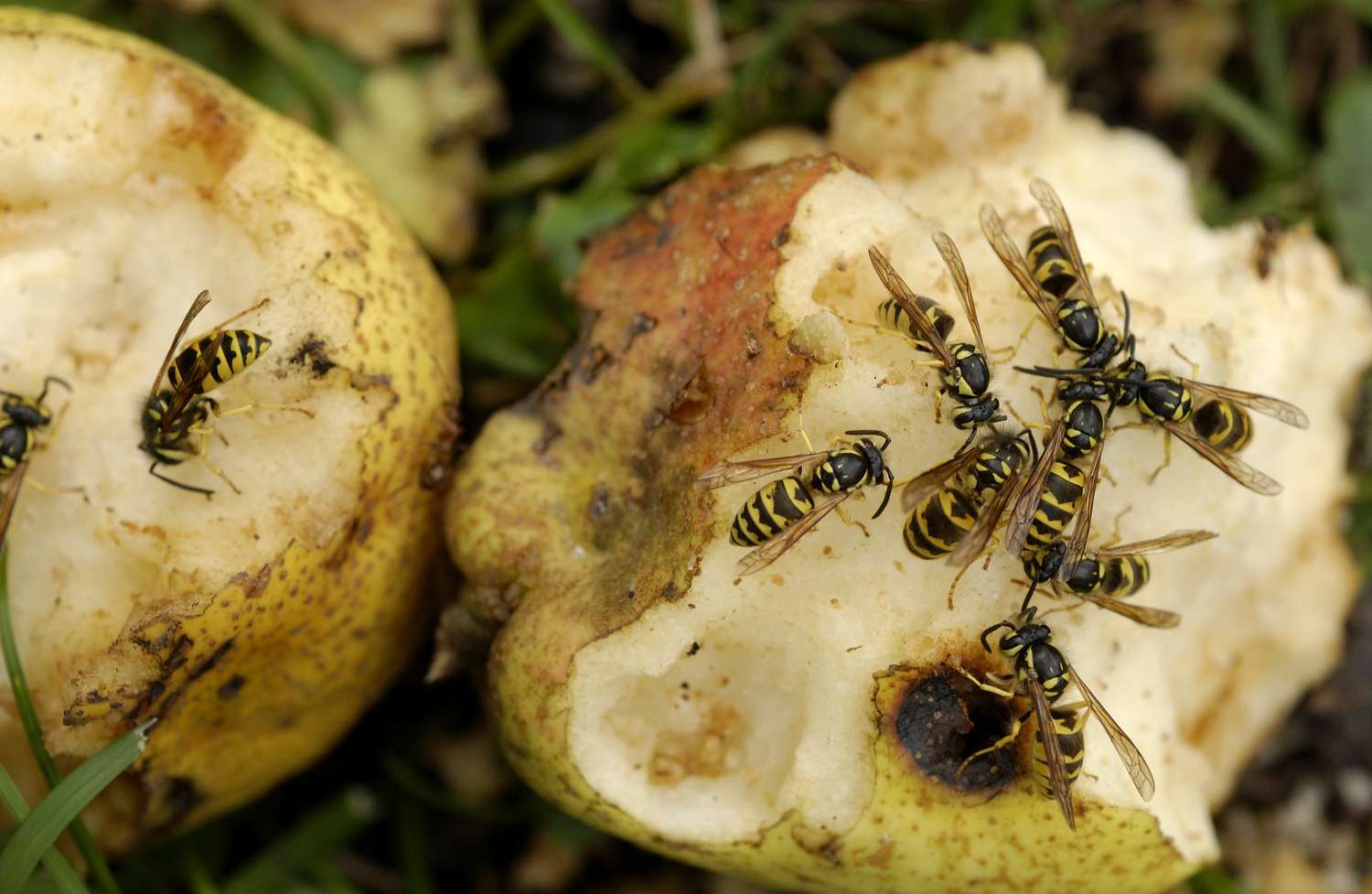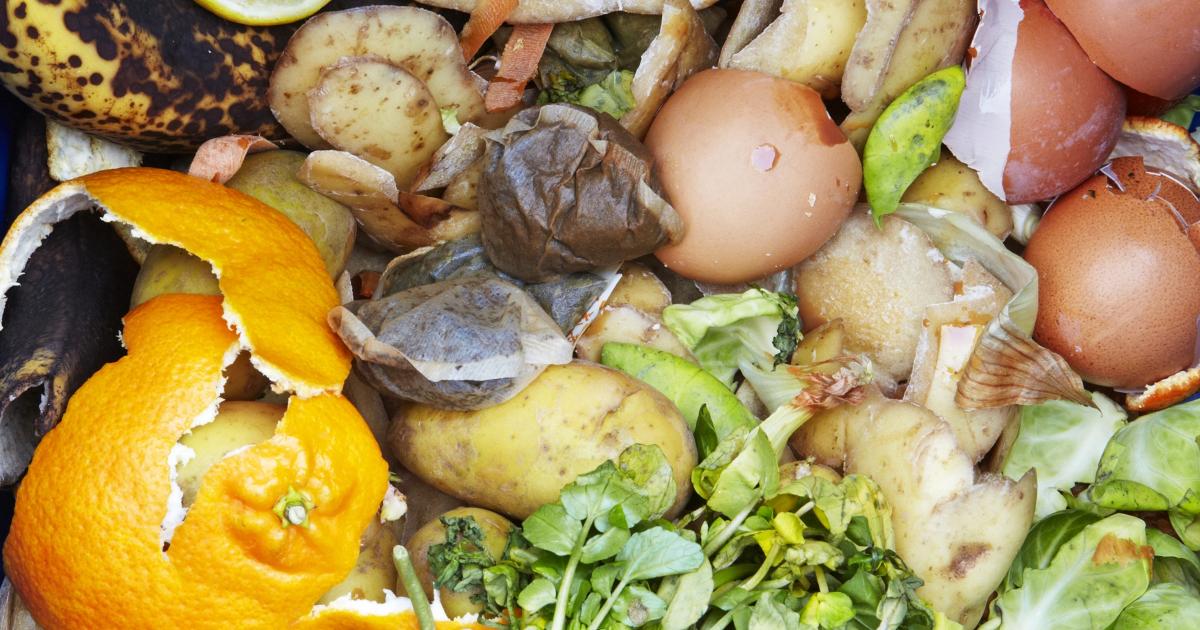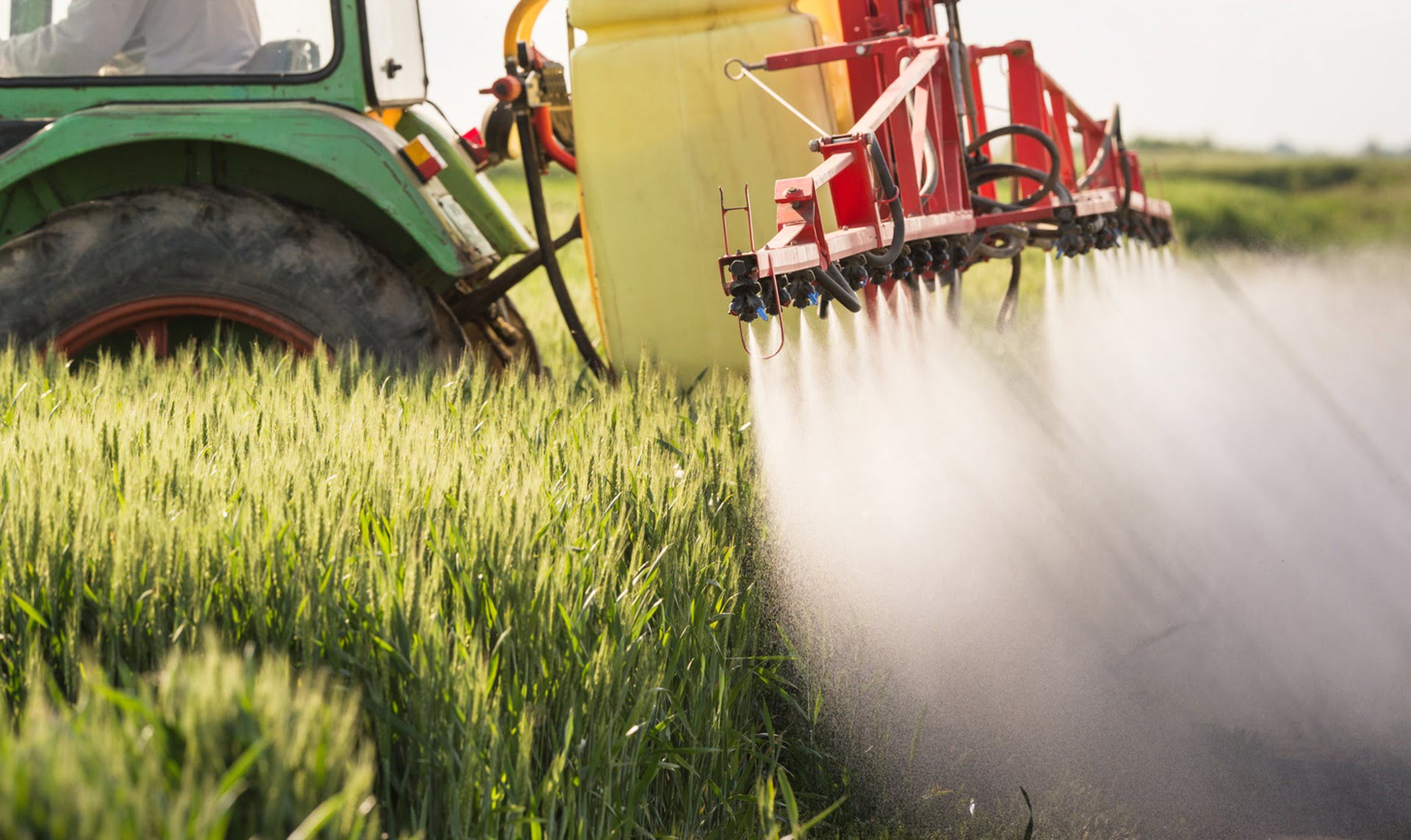Home>Gardening News and Trends>Latest News>What Proportion Of Food Crops Are Pollinated By Insects


Latest News
What Proportion Of Food Crops Are Pollinated By Insects
Modified: January 22, 2024
Get the latest news on what proportion of food crops are pollinated by insects and their significance in the agricultural industry.
(Many of the links in this article redirect to a specific reviewed product. Your purchase of these products through affiliate links helps to generate commission for Chicagolandgardening.com, at no extra cost. Learn more)
Table of Contents
- Introduction
- Importance of Insect Pollination in Food Crop Production
- Factors Affecting Insect Pollination
- Types of Insect Pollinators
- Proportion of Food Crops Dependent on Insect Pollination
- Impact of Declining Insect Pollinators on Food Security
- Conservation and Management of Insect Pollinators
- Conclusion
Introduction
When it comes to the production of our food crops, there is an important factor that often goes unnoticed – insect pollination. Insects play a crucial role in the pollination of many of the fruits, vegetables, and grains that make up our diets. Without them, our food system would be in jeopardy.
Pollination is the transfer of pollen from the male part of a flower to the female part, resulting in fertilization and eventually, the production of seeds and fruits. While wind and other factors can also contribute to pollination, insects, especially bees, are the primary pollinators for a wide variety of plant species.
The process of insect pollination is a fascinating and intricate dance between flowers and their pollinators. As insects search for nectar and pollen, they inadvertently transfer pollen grains from one flower to another. This cross-pollination is essential for genetic diversity and contributes to the health and productivity of plant populations.
In recent years, there has been growing concern about the decline of insect populations worldwide. Factors such as habitat loss, pesticide use, climate change, and disease have all contributed to this decline. As a result, the crucial ecosystem service of insect pollination is now at risk.
In this article, we will explore the importance of insect pollination in food crop production, the different types of insect pollinators, and the proportion of food crops that rely on them for pollination. We will also discuss the consequences of declining insect pollinators on food security and the conservation efforts needed to protect these vital creatures.
Importance of Insect Pollination in Food Crop Production
Insect pollination plays a critical role in the production of many of the food crops that we rely on for sustenance. It is estimated that approximately 75% of the world’s food crops depend, at least in part, on pollinators like bees, butterflies, beetles, and flies.
One of the main reasons why insect pollination is so important is because it increases the yield and quality of crop production. When flowers are adequately and efficiently pollinated, they produce more fruits or seeds. This means higher crop yields, ensuring an abundant food supply to meet the demands of our growing population.
In addition to increasing crop yields, insect pollination also improves the quality of the produce. Proper pollination leads to more uniform fruits, which are not only visually appealing but also have better taste and texture. Insects play a vital role in maintaining genetic diversity within plant populations, ensuring that crops are resilient to environmental changes and less susceptible to diseases.
Many of our favorite fruits and vegetables heavily rely on insect pollination. Apples, strawberries, cherries, blueberries, almonds, and pumpkins are just a few examples of crops that benefit from insect pollinators. Other staple food crops like soybeans, canola, and sunflowers also require insect pollination.
It is not just the diversity of crops that benefits from insect pollination, but also the diversity of wild plants. Insects play a significant role in the pollination of wildflowers and other plant species, which are essential for maintaining healthy ecosystems and supporting other wildlife.
Furthermore, insect-pollinated crops are also economically significant. The value of insect-pollinated crops is estimated to be worth hundreds of billions of dollars worldwide. The industry sectors that depend on these crops, such as agriculture, horticulture, and beekeeping, provide employment and contribute to the economy.
Insect pollination is not only beneficial to food crop production but also to the overall health and resilience of our agricultural systems. It is a symbiotic relationship where both insects and plants depend on each other for their survival and propagation. Therefore, understanding and conserving insect pollinators are crucial in ensuring food security and sustainable agriculture for future generations.
Factors Affecting Insect Pollination
Insect pollination is a delicate process that can be influenced by various factors. Understanding these factors is crucial for effective conservation and management of insect pollinators, as well as ensuring the sustainability of our food crop production.
One of the key factors affecting insect pollination is habitat loss. As human activities continue to encroach upon natural habitats, the available foraging and nesting resources for pollinators diminish. Destruction and fragmentation of habitats deprive pollinators of the diverse floral resources they depend on. Consequently, this leads to reduced pollinator populations and a decline in their pollination services.
Pesticide use is another significant factor impacting insect pollination. While pesticides are essential for pest control, their indiscriminate use can harm both target pests and non-target insects like bees and butterflies. Exposure to pesticides can disrupt the reproductive behavior of pollinators, impair their navigation abilities, and even cause mortality. Implementing integrated pest management practices and using bee-friendly pesticides can help mitigate this issue.
Climate change is also having profound effects on insect pollination. Rising temperatures and altered precipitation patterns can impact the phenology and synchrony between flowering plants and their pollinators. Changes in flowering times can disrupt the timing of pollinator activity, leading to poor pollination and reduced crop yields. Climate change can also affect the availability and quality of floral resources, further impacting the health and survival of pollinators.
In addition to these factors, the prevalence of pests and diseases among pollinators can significantly affect their population size and pollination efficiency. Parasites, pathogens, and invasive species can weaken and even decimate pollinator populations. Proper disease management and control measures, such as maintaining healthy bee colonies and preventing the spread of pathogens, are essential for ensuring effective pollination.
Furthermore, changes in agricultural practices, such as the monoculture of crops and the reduction of floral resources in landscapes, can negatively impact insect pollination. The lack of diverse plant species and limited availability of nectar and pollen sources can limit pollinators’ foraging options, leading to inadequate nutrition and weakened pollination services.
Understanding these factors that affect insect pollination is crucial in developing strategies for pollinator conservation and sustainable farming practices. By addressing these challenges through habitat restoration, reducing pesticide use, promoting biodiversity, and implementing climate-smart agriculture, we can create a conducive environment for pollinators to thrive and continue their vital role in our food crop production.
Types of Insect Pollinators
Insect pollinators come in a wide variety of shapes and sizes, each with their unique adaptations for pollination. From bees and butterflies to beetles and flies, these fascinating creatures play a vital role in transferring pollen from flower to flower. Let’s explore some of the main types of insect pollinators:
1. Bees: Bees are perhaps the most well-known and efficient pollinators. They have specialized body structures, such as hairy bodies and branched hairs on their legs, which help them collect and transfer pollen. Bees are attracted to brightly colored flowers with sweet nectar, and as they move from flower to flower in search of nectar, they accidentally brush against the plant’s reproductive structures, facilitating pollination.
2. Butterflies: Butterflies are beautiful creatures that also contribute to pollination. Unlike bees, they are not as efficient due to their preference for sipping nectar rather than collecting and transporting pollen. However, their long tongues are well-adapted to reach deep into tubular flowers, allowing them access to nectar. As they feed, they brush against the flower’s reproductive organs, aiding in pollination.
3. Beetles: Beetles are one of the oldest and most diverse groups of pollinators. They are attracted to flowers with strong odors and abundant pollen. Unlike bees and butterflies, beetles are not specialized pollinators and often crawl around flowers, inadvertently picking up and transferring pollen. Some beetles may be attracted to specific flowers, while others may visit a wide range of plant species.
4. Flies: Flies may not be the most glamorous pollinators, but they play an important role in the pollination of certain plant species. Flies are often attracted to flowers that emit strong odors, and they feed on nectar or decaying plant matter. As they move from flower to flower, flies get coated with pollen, promoting cross-pollination. Some fly species even mimic bees or wasps, further assisting in the pollination process.
5. Moths: Moths are nocturnal pollinators and are particularly attracted to white or pale-colored flowers that emit a sweet scent. Like butterflies, moths have a long proboscis, which allows them to access nectar from deep flowers. Moths often pollinate flowers that bloom at night and rely on their sense of smell to locate these flowers in the dark.
These are just a few examples of insect pollinators, but there are many more, including wasps, ants, beetles, and even some species of bugs. Each type of pollinator has its preferences, adaptations, and ecological niche. Together, they form a complex network of interactions, ensuring the pollination and reproduction of countless plant species.
Proportion of Food Crops Dependent on Insect Pollination
The reliance of food crops on insect pollination is more significant than many people realize. It is estimated that approximately 75% of the world’s food crops depend, at least in part, on insect pollinators like bees, butterflies, beetles, and flies.
Some of the most well-known and widely consumed crops that rely heavily on insect pollination include fruits like apples, strawberries, oranges, and blueberries. These crops have flowers that require cross-pollination to produce high-quality and abundant fruits. Without insect pollinators, these fruits would be smaller, misshapen, and less flavorful.
Other crops that depend on insect pollination include nuts like almonds and cashews, which rely almost entirely on bees for pollination. Without bees, the yield and quality of nut crops would be significantly reduced, impacting the availability and affordability of these important food sources.
In addition to fruits and nuts, many vegetables also rely on insect pollination. Examples include tomatoes, cucumbers, peppers, and zucchini. Insect pollinators are crucial for these crops to produce viable seeds and fruit. Without proper pollination, the yield and quality of these vegetables would be greatly diminished.
Furthermore, certain oilseed crops like canola, sunflowers, and sesame also require insect pollination for successful reproduction. These crops are not only used as food but also for the production of cooking oil. Insect pollinators play a crucial role in ensuring the vitality and productivity of these important oilseed crops.
It is worth noting that while wind and other factors can contribute to pollination in some crops, insect pollinators are still essential for ensuring efficient and effective cross-pollination. Even for wind-pollinated crops like wheat and corn, the presence of insect pollinators can increase the rate of pollination and enhance the quality and yield of these important cereal crops.
The proportion of food crops dependent on insect pollination highlights the critical role that pollinators play in our food systems. Without them, our diets would be limited, and the availability and affordability of certain foods would be severely affected. The decline in pollinator populations poses a significant threat to global food security. Recognizing and addressing the challenges faced by pollinators is essential for maintaining a sustainable and resilient food production system.
Impact of Declining Insect Pollinators on Food Security
The decline of insect pollinators poses a significant threat to global food security. As we rely heavily on these pollinators to ensure the reproduction of many of our food crops, their decline can have far-reaching consequences for our ability to produce enough food to feed our growing population.
One of the primary impacts of declining insect pollinators is the reduction in crop yields. Without efficient pollination, many crops produce fewer fruits or seeds, resulting in lower overall harvests. This can lead to increased food prices and limited availability of certain fruits, vegetables, and nuts that rely heavily on insect pollination.
Insect pollinators also play a crucial role in ensuring the quality and nutritional value of our food. Proper pollination results in larger, more uniform, and higher-quality fruits and vegetables. Without adequate pollination, the size, shape, and flavor of our produce can be adversely affected. This not only impacts consumer preference but also has implications for the nutritional content of our food.
Furthermore, the decline of insect pollinators can lead to a loss of crop diversity. Many crop species that depend on insect pollination also rely on genetic diversity to withstand pests, diseases, and changing climatic conditions. Without effective pollination, these crops may struggle to reproduce, limiting the available genetic variation and making them more vulnerable to environmental pressures.
The impact of declining pollinators extends beyond the direct effects on crop production. It also has ecosystem-level consequences. Pollinators are crucial for the reproduction of wild plant species, providing food and habitat for other animals and supporting healthy ecosystems. The loss of pollinators can disrupt these intricate ecological relationships, leading to a decline in biodiversity and the overall health of ecosystems.
Another important aspect to consider is the implications for small-scale farmers who heavily rely on insect pollination for their livelihoods. These farmers may not have access to alternative pollination methods, such as manual or mechanical pollination, and depend on natural pollinators for their crop productivity. The decline of pollinators can exacerbate existing inequalities and challenges faced by small-scale farmers, affecting their incomes and food security.
Addressing the decline of insect pollinators and mitigating its impact on food security requires a multi-pronged approach. This includes implementing sustainable agricultural practices that support pollinators, promoting habitat conservation and restoration, reducing pesticide use, and raising awareness about the importance of pollinators among farmers, policymakers, and the general public.
By safeguarding insect pollinators and their habitats, we can enhance our food production systems, ensure the availability and diversity of food crops, and contribute to a more resilient and sustainable future for global food security.
Conservation and Management of Insect Pollinators
Given the critical role that insect pollinators play in our food systems and the challenges they face, it is imperative that we take proactive measures to conserve and manage these invaluable creatures. Here are some key strategies for the conservation and management of insect pollinators:
1. Habitat Conservation and Restoration: Protecting and restoring natural habitats is essential for providing suitable foraging and nesting places for pollinators. This includes preserving natural areas, creating pollinator-friendly landscapes, and planting native flowering plants that provide a diverse and abundant source of nectar and pollen throughout the year. Urban areas can also play a role by incorporating green spaces and pollinator-friendly plantings.
2. Pesticide Regulation and Reduction: Implementing sustainable pest management practices that minimize or eliminate the use of pesticides harmful to pollinators is crucial. This includes promoting integrated pest management approaches, encouraging the use of bee-safe pesticides, and adopting organic farming practices that prioritize biological control methods.
3. Enhancing Floral Resources: Providing ample floral resources for pollinators is vital for their survival and reproduction. This can be achieved through strategic planting of diverse flowering plants that bloom at different times throughout the growing season. Creating pollinator-friendly gardens, hedgerows, and wildflower meadows can greatly enhance the availability of nectar and pollen sources.
4. Education and Awareness: Raising awareness about the importance of pollinators among farmers, gardeners, policymakers, and the general public is instrumental in preserving and encouraging their conservation. Educating individuals about the role of pollinators in food production and the steps they can take to support them can lead to widespread action and engagement.
5. Collaboration and Research: Collaboration between researchers, farmers, beekeepers, and conservation organizations is essential for finding effective solutions and sharing best practices. Continued research into the biology, behavior, and ecological interactions of pollinators can further enhance our understanding and inform targeted conservation efforts.
6. Beekeeping and Managed Pollination: Beekeepers play a crucial role in pollinator conservation. Responsible beekeeping practices, such as providing appropriate nutrition, managing pests and diseases, and limiting the spread of pathogens, are essential for maintaining healthy bee colonies. Managed pollination services, where beekeepers provide hives for crop pollination, contribute to crop yield and support pollinator populations.
7. Policy Support: Governments and policymakers have a crucial role to play in supporting pollinator conservation efforts. This can be achieved through the development and implementation of policies that promote sustainable farming practices, protect pollinator habitats, and incentivize pollinator-friendly approaches in agriculture and land management.
Conserving and managing insect pollinators should be viewed as a collective responsibility requiring the collaboration and action of individuals, organizations, and governments. By implementing these strategies and fostering a greater appreciation for the vital role of pollinators, we can ensure the continued well-being of these fascinating creatures and the sustainability of our food systems.
Conclusion
Insect pollinators are unsung heroes in our food production systems, playing a crucial role in the reproduction and quality of many food crops. However, their populations are declining at an alarming rate due to various factors such as habitat loss, pesticide use, climate change, and disease.
The dependence of food crops on insect pollination is substantial, with approximately 75% of the world’s food crops relying on pollinators like bees, butterflies, beetles, and flies. The decline of these pollinators poses a significant threat to global food security, impacting crop yields, quality, and nutritional value.
To address this crisis, conservation and management efforts are essential. This includes preserving and restoring habitats, reducing pesticide use, enhancing floral resources, promoting sustainable agricultural practices, and raising awareness about the importance of pollinators among farmers, policymakers, and the general public.
Collaboration between researchers, farmers, beekeepers, and conservation organizations is vital for finding innovative solutions and sharing best practices. Policies supporting pollinator conservation, sustainable agriculture, and the protection of pollinator habitats are also necessary for long-term success.
By prioritizing the conservation and management of insect pollinators, we can support the sustainability and resilience of our food systems. Ensuring the availability and diversity of food crops, maintaining healthy ecosystems, and securing the livelihoods of farmers are all important outcomes of these efforts.
Let us recognize the invaluable contributions of insect pollinators and work together to safeguard their populations. Through collective action, we can create a future where the delicate partnership between plants and pollinators thrives, ensuring food security and the well-being of our planet for generations to come.








